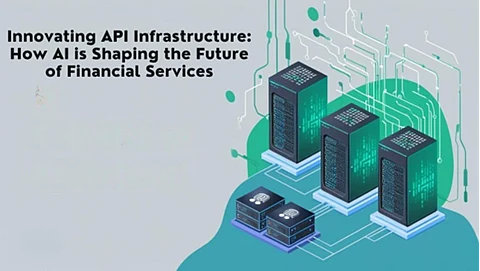

In financial services, where operations have to be real-time, secure, and efficient, the transformation of Application Programming Interfaces (APIs) has changed the game. Dileep Kumar Somajohassula's thoughtful article discusses how artificial intelligence (AI) is transforming API optimization within the financial services sector, expanding the horizon of performance, security, and cost-effectiveness.
APIs, which were initially just a means of system communication, are now an essential part of the smooth operation of digital ecosystems. In financial services, where the margin for error is slim, API performance needs to be optimized. Among the most thrilling developments to be talked about is intelligent traffic management, a process heavily supported by machine learning (ML) and reinforcement learning. Conventional routing methods, relying on static rules, are unable to respond to dynamic changes in real-time traffic, thereby tending to create inefficiencies during high loads or unusual situations. AI-based traffic management employs sophisticated algorithms to optimize dynamic request processing.
Through pattern recognition of real-time data, AI-based systems are able to forecast traffic spikes triggered by market fluctuations or spikes in consumer activity and redirect requests to provide the least amount of latency. This predictive feature not only keeps key financial systems afloat even in stress conditions but also decreases the load on infrastructure, enhancing performance and cost-effectiveness. For instance, reinforcement learning algorithms keep modifying routing policies in light of actual traffic conditions in real time, maximizing the use of resources and reducing latency.
Predictive scaling is revolutionizing financial systems by employing AI to predict demand fluctuations and distribute resources accordingly. Unlike conventional reactive approaches, predictive scaling foresees subsequent load patterns in advance using sophisticated forecasting models. By employing machine learning techniques such as gradient boosting and deep learning, predictive systems are capable of more accurately predicting demand spikes, thus facilitating proactive resource allocation. This method is pivotal within financial services, where volume of transactions spikes during market openings, month-ends, or holiday seasons. Predictive scaling maintains performance levels during such peak periods without unnecessary over-provisioning costs. It also improves system resilience through faster recovery times during failures, leading to better overall performance and reliability.
Anomaly detection using AI greatly improves financial platform security by detecting possible threats earlier and more efficiently than conventional means. In contrast to rule-based systems, AI applies unsupervised learning models such as isolation forests and autoencoders to discover abnormal traffic patterns. Deep learning models such as Long Short-Term Memory (LSTM) networks assist in the identification of temporal anomalies, allowing for the early detection of security violations. These systems constantly evolve, responding to new attack patterns and reducing false positives, offering a dynamic shield against advanced cyberattacks and maintaining API integrity.
Artificial intelligence-based cost optimization models are essential for financial institutions seeking to lower costs without compromising service quality. These models scan patterns of resource utilization to detect inefficiencies, such as over-provisioning or duplication. Through the application of machine learning, financial systems can adjust the allocation of resources dynamically to provide optimal performance without wasteful expenditure. This is particularly effective in cloud-based systems, where dynamic allocation can reduce operational expenditures. As the models improve, they provide continuous savings and better efficiency.
AI integration presents enormous advantages but also has challenges such as legacy system compatibility, regulatory limitations, and data quality. Moving to AI-based systems can involve significant architectural changes, which involve risks. Compliance is important in regulated industries such as finance. But the benefits are evident, AI can make it possible for faster, safer, and cheaper services. Emerging technologies like federated learning, edge computing, and AutoML hold great promise in bringing AI optimization within the reach of smaller institutions and reducing barriers to entry.
The ongoing improvements in AI-based API optimization are poised to reshape the finance world. As AI technologies advance, so will their capacity to tackle nuanced, multi-pronged problems. For financial institutions, this translates into a future in which performance is continuously optimized in real time, security risks are identified before they materialize, and infrastructure expenses are reduced without sacrificing service quality. Overall, the AI-powered developments in API optimization are revolutionizing the operations of financial institutions.
As Dileep Kumar Somajohassula's study illustrates, these advancements provide an unmistakable guide to institutions seeking to optimize performance, security, and cost-effectiveness in the rapidly digital world. The future holds even more promising prospects for financial technology, with AI as the key driver.
